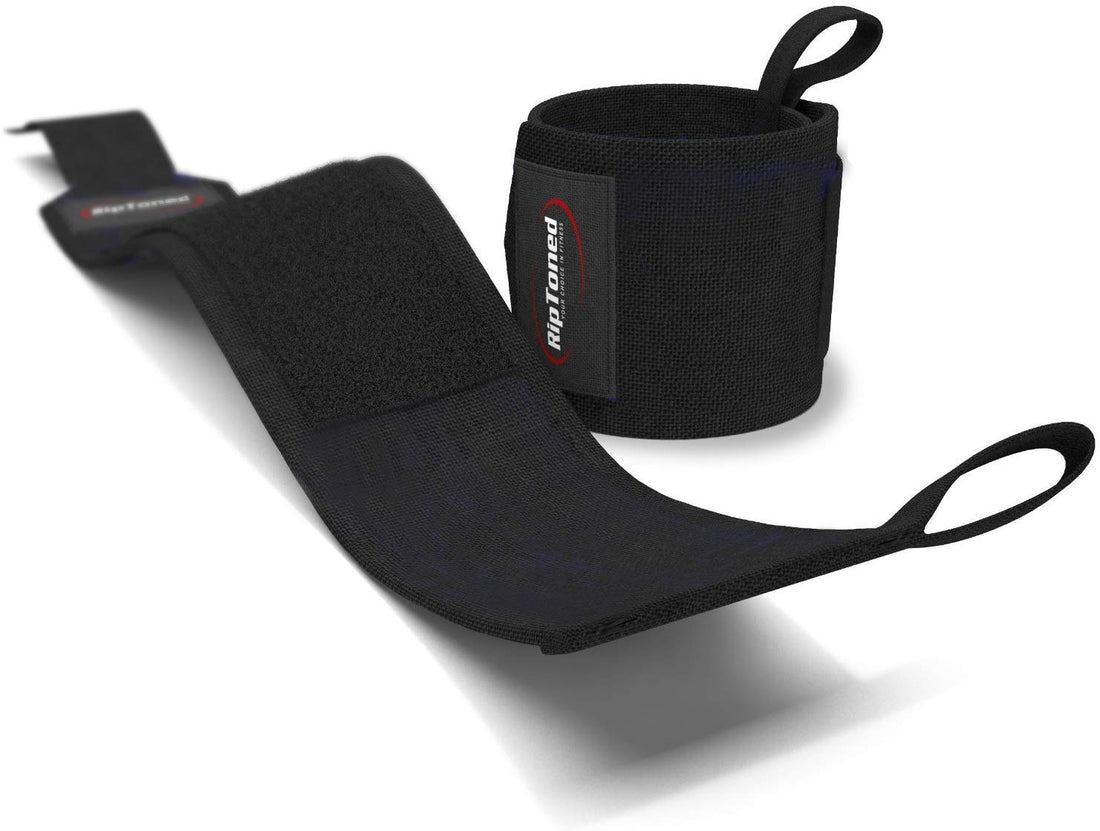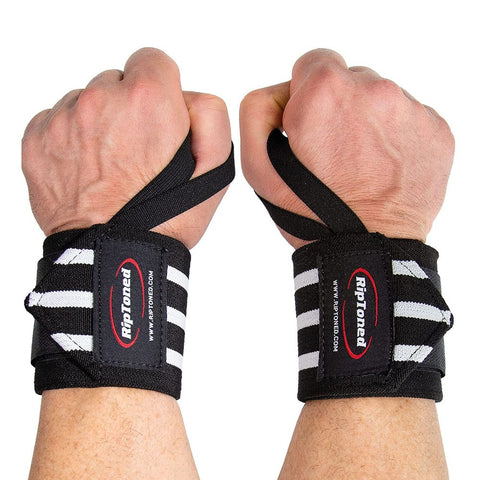
What Do Wrist Wraps Do
Share
Wrist wraps are commonly used by athletes and weightlifters to provide support and stability to the wrist joint during training or competition. They are made of a strong fabric wrapped around the wrist, usually secured with a Velcro closure.
Wrist wraps have become increasingly popular as more people recognize the benefits they offer for injury prevention and performance enhancement.
In this article, we will discuss the purpose of wrist wraps and how they work to support the wrist joint. We will also explore the different types of wrist wraps available and their specific uses for various activities.
What are Wrist Wraps?
Wrist wraps are specialized equipment designed to provide support and stability to the wrist joint. They are commonly made of a strong fabric, such as nylon or cotton, and are usually adjustable with a Velcro closure.
Their primary purpose is to limit the movement of the wrist during physical activity, which can help prevent injuries such as strains, sprains, and hyperextensions. Wrist wraps also help to redistribute the weight and pressure placed on the wrist, reducing fatigue and discomfort.
Wrist wraps come in various lengths, widths, and materials, depending on their intended use. Some are designed for lighter activities like yoga or Pilates, while others are specifically made for heavy lifting or sports that involve repetitive wrist movements, such as boxing or tennis.
Additionally, wrist wraps can be worn on one or both wrists, depending on the individual's needs and preferences. Some individuals may benefit from wearing a wrap on their dominant hand to provide extra support during activities that require precise and forceful movements.
Benefits of Wrist Wraps
The main benefit of wrist wraps is their ability to provide support and stability to the wrist joint during physical activity. This can help prevent injuries, especially in activities that involve high-impact or repetitive movements.
Wrist wraps also allow for better weight distribution across the wrist joint, which can reduce fatigue and discomfort. They also promote proper form and technique, as they limit excessive wrist movement that can lead to injury. Another advantage of wearing wrist wraps is the added confidence they provide.
Many weightlifters and athletes report feeling more secure and stable when using wrist wraps, allowing them to push themselves harder during training or competition. In addition to injury prevention, wrist wraps can also aid in injury recovery. For individuals with existing wrist injuries, wearing a wrap can provide additional support and stability to the joint while it heals.
Plus, wrist wraps can also improve grip strength. By limiting the hand and wrist movement during exercises that require a strong grip, individuals can focus on engaging their muscles and lifting heavier weights.
What Do Wrist Wraps Do?
Now that we have discussed the purpose and benefits of wrist wraps let's delve deeper into how they work. As mentioned before, wrist wraps limit the movement of the wrist joint during physical activity.
For example, when performing exercises such as bench presses or push-ups, the wrists tend to bend backward due to the pressure placed on them. This can lead to strain or injury over time. By wearing wrist wraps, the fabric acts as a support system for the joint, preventing excessive movement.
Additionally, wrist wraps also provide compression to the wrist, which can help reduce swelling and inflammation. This is beneficial for individuals with conditions such as carpal tunnel syndrome or tendinitis.
It's essential to note that wrist wraps should not be worn all the time. Like any equipment, they should be used in moderation and only when necessary. Overusing wrist wraps can lead to dependence on them and weak wrists over time.
Plus, it's crucial to adjust the tightness of wrist wraps accordingly. If they are too loose, they won't provide enough support, and if they are too tight, they can restrict blood flow and cause discomfort. Also, follow the manufacturer's instructions for proper use and wear.
Is Wrist Wrap Right for You?
While wrist wraps offer many benefits, they may not be suitable for everyone. Individuals with pre-existing medical conditions or injuries should consult a healthcare professional before using wrist wraps.
Additionally, it's crucial to choose the right type of wrist wrap for your intended use. If you are primarily doing yoga or Pilates, a lighter and more flexible wrist wrap may be sufficient. However, if you are involved in heavy lifting or sports that require repetitive wrist movements, a sturdier and more supportive wrap would be ideal.
It's also essential to consider your fitness goals when deciding whether or not to use wrist straps.
. If you are looking to push yourself to lift heavier weights, then wrist wraps can be a useful tool. However, if your goal is to build wrist strength and stability, then it may be better to forgo the use of wraps.
Ultimately, the decision to use wrist wraps should come down to personal preference and individual needs. If you are unsure, it's always best to consult a fitness professional who can assess your form and technique and provide personalized recommendations. With the right use and understanding, wrist wraps can be a valuable support system for those looking to improve their fitness and prevent injuries.
Mistakes to Avoid When Using Wrist Wraps
While wrist wraps can be beneficial, there are also some common mistakes that individuals make when using them. Here are a few things to avoid when incorporating wrist wraps into your workout routine:
- Wearing wrist wraps all the time: As mentioned before, overusing wrist wraps can lead to dependence and weak wrists over time. It's essential to only use them when necessary, such as during heavy lifting or high-impact activities.
- Not adjusting the tightness properly: Wrist wraps should be snug but not too tight. Make sure to follow the manufacturer's instructions for proper use and wear.
- Using wrist wraps as a quick fix for poor form: Wrist wraps should not be used as a bandaid solution for improper form or technique. Proper form is crucial to prevent injuries, and wrist wraps should only supplement good form, not replace it.
- Not seeking professional advice: For individuals with pre-existing medical conditions or injuries, it's essential to consult with a healthcare professional before using wrist wraps. They can provide personalized advice and recommendations based on your specific needs.
- Choosing the wrong type of wrist wrap: As mentioned earlier, there are different types of wrist wraps available for different purposes. Make sure to choose one suitable for your intended use to get the most benefits out of them.
By avoiding these common mistakes, you can ensure that you are using wrist wraps effectively and safely. Remember to listen to your body and use wrist wraps in moderation to get the most out of them. With proper use and understanding, wrist wraps can be a valuable asset in your fitness journey.
Does Brand Matter When Choosing Wrist Wraps?
When it comes to wrist wraps, there are numerous brands and options available on the market. So, does brand matter when choosing wrist wraps? The short answer is yes and no.
On one hand, there are trusted and reputable brands that have been producing high-quality wrist wraps for many years. These brands often have a loyal following and are known for their durability and effectiveness. On the other hand, some lesser-known brands may offer equally good quality wrist wraps at a lower price point.
When choosing a brand, it's essential to consider factors such as material, construction, and customer reviews. Opting for a well-known brand can provide peace of mind and assurance of quality, but it may also come with a higher price tag. However, trying out a lesser-known brand can be a more cost-effective option and may surprise you with their quality.
Another factor to consider is the customer service and warranty offered by the brand. Some brands offer warranties or guarantees on their products, which can provide added protection in case of any defects or issues.
How to use Wrist Wraps Safely and Effectively
When using wrist wraps, it's crucial to follow the manufacturer's instructions for proper use and wear wrist wraps. Here are some general guidelines on how to use wrist wraps safely and effectively:
- Start with a proper warm-up: Before putting on your wrist wraps, warm up your wrists and hands through some light stretches and movements. This will help prevent any injuries and ensure proper blood flow.
- Wrap in the right direction: Make sure to wrap your wrist wraps in the correct direction, as indicated by the manufacturer. Generally, you should start from the bottom of your palm and wrap upwards towards your forearm.
- Adjust tightness accordingly: As mentioned before, wrist wraps should be snug but not too tight. Adjust the tightness according to your comfort level and the type of activity you are doing.
- Use in moderation: It's essential to only use wrist wraps when necessary, such as during heavy lifts or high-impact activities. Overuse can lead to dependency and weaken your wrists over time.
- Remove after use: Once you have completed your workout or activity, make sure to remove your wrist wraps and give your wrists some time to rest and recover.
Remember to always listen to your body and use wrist wraps in moderation. If you experience any discomfort or pain while using them, it's best to stop and consult with a fitness professional for personalized advice. With proper use, wrist wraps can be a valuable tool in your fitness journey. So, make sure to use them safely and effectively to get the most out of them.
FAQs
What are the benefits of wearing wrist wraps during weight lifting?
Wrist wraps provide essential wrist support during heavy pressing exercises, such as bench presses, helping to prevent wrist pain. By stabilizing the wrist joint, they ensure that you can focus on the lift, thereby enhancing your upper body strength without the risk of injury.
How do wrist wraps contribute to wrist stability while lifting weights?
Wearing wrist wraps during weightlifting sessions significantly improves wrist stability. This is crucial for exercises that put a lot of stress on your wrists, ensuring that you can safely lift heavier weights without compromising your form or risking injury.
Can wrist wraps help alleviate wrist pain associated with lifting?
Yes, wrist wraps are designed to offer substantial wrist support, which in turn helps alleviate wrist pain commonly associated with lifting heavy weights. By evenly distributing the pressure and providing a snug fit around the wrist, they reduce the strain exerted on the wrist joints during lifting.
What's the difference between wrist wraps and lifting straps?
Wrist wraps are primarily used to provide wrist support and improve wrist stability, and they are particularly beneficial during bench press and other heavy pressing exercises. Lifting straps, on the other hand, are designed to enhance grip on the barbell or dumbbells, allowing you to lift heavier without grip strength being a limiting factor. While both accessories are valuable for weightlifting, they serve different purposes in enhancing performance and safety.
Conclusion
In summary, wrist wraps can be a useful tool for individuals looking to improve their fitness and prevent injuries. However, it's essential to use them correctly and in moderation to avoid potential mistakes and dependency. When choosing wrist wraps, consider brand reputation, material, and customer reviews.
Always follow the manufacturer's instructions for safe and effective use. With proper understanding and use, wrist wraps can be a valuable asset in achieving your fitness goals. So, don't be afraid to incorporate them into your workout routine and see the benefits for yourself. Keep in mind that wrist wraps are not a substitute for proper form and technique, so make sure to prioritize those as well for optimal results. Happy lifting!

